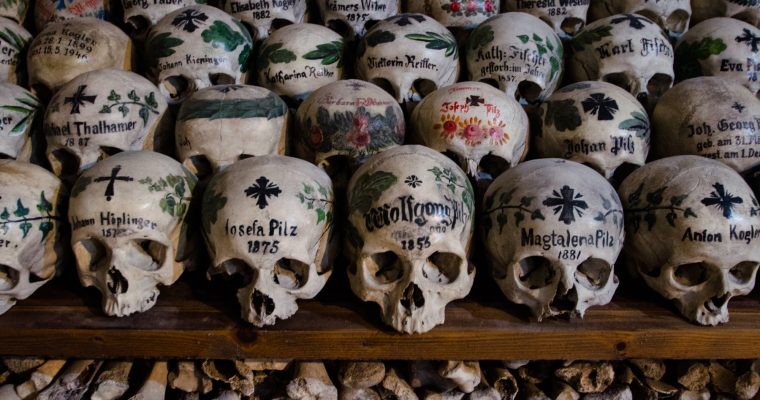I know, more skulls?? But these are super fancy and decorated. Why you ask? Smithsonian has the answer! TLDR:
All across Europe there was a space issue in graveyards, and since Catholics have to be buried underground, churches started reusing the graveyards by clearing out old bones. They started putting them on display to teach people 1) everyone dies; and 2) everyone ends up being a bag of bones no matter their status in life. People didn’t like that idea of equality in death, so they started asking for their beloveds’ bones to be decorated. Here’s how the process went:
The tradition followed a specific process. First, the skull was removed from the grave and left to sit outside for a few weeks until all signs of decay were gone and the bones was bleached a delicate ivory by the sun. Then, the family, an artist or the undertaker collected the bones and began to paint, traditionally using shades of green and red. The majority were painted with flowers, often with floral wreaths featuring ivy, laurel, oak leaves or roses. Every part of the painting symbolized something: oak to signify glory; laurel, victory; ivy, life; and roses, love. Many also painted crosses and Latin text showing the name and life dates of the deceased. Once painted, the skulls were set on a shelf in the charnel house with the rest of the bones organized beneath. Families would often arrange the bones nearby the closest relatives.
The oldest skull in this charnel house goes back to 1720, and the newest was placed there in 1995. If you are interested, apparently they still take requests!


Leave a Reply